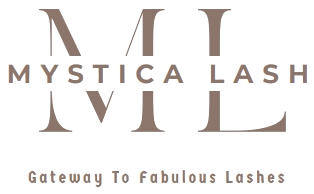Eyelash Extensions
5 Popular Lash Extension Curls And How To Style Them
Learning all things lash extensions, curls, humidity and styling can be quite confusing and mind-boggling! Don’t fret, we’ve got you covered!
If you’re wondering about the different curls and styling of eyelash extensions, you’ve come to the right place!
There are some ‘basic’ curls and slightly more advanced curls that aren’t seen very often. However, even with ‘basic’ curls, you’ll be able to create amazing sets for your clients. We’ll be discussing:
1. What are the different lash curls?
2. What lash curl should I be using?
To provide the best service for your clients it is essential to stock different curls, dimensions and lengths of lashes to choose from. If you stock the ‘basic’ C and D curls, you may not only be limiting your clients but yourself as well as what you can offer in terms of your customisation of styles. Mapping lash sets for clients isn’t a ‘one-size-fits-all’ process. Having the ability to customise and enhance your client’s features will surely get you more clients in the door.
What are the different lash curls?
Eyelash extension curls come in different degrees of curl and dimensions. Having an array of curls in your lash kit can make a significant difference in the overall look of your sets. The more curls you can provide, the more that you can customise your artistry, resulting in more of your services being in demand.
🤎B curls aren’t as curly as C curls and are ideal for clients with upward-facing lashes who want a noticeable curl that is still soft and natural. This curl is a bit more straight at the base, then gently curls closer to the tip. This curl is best suited for deep-set eyes and hooded eyes.
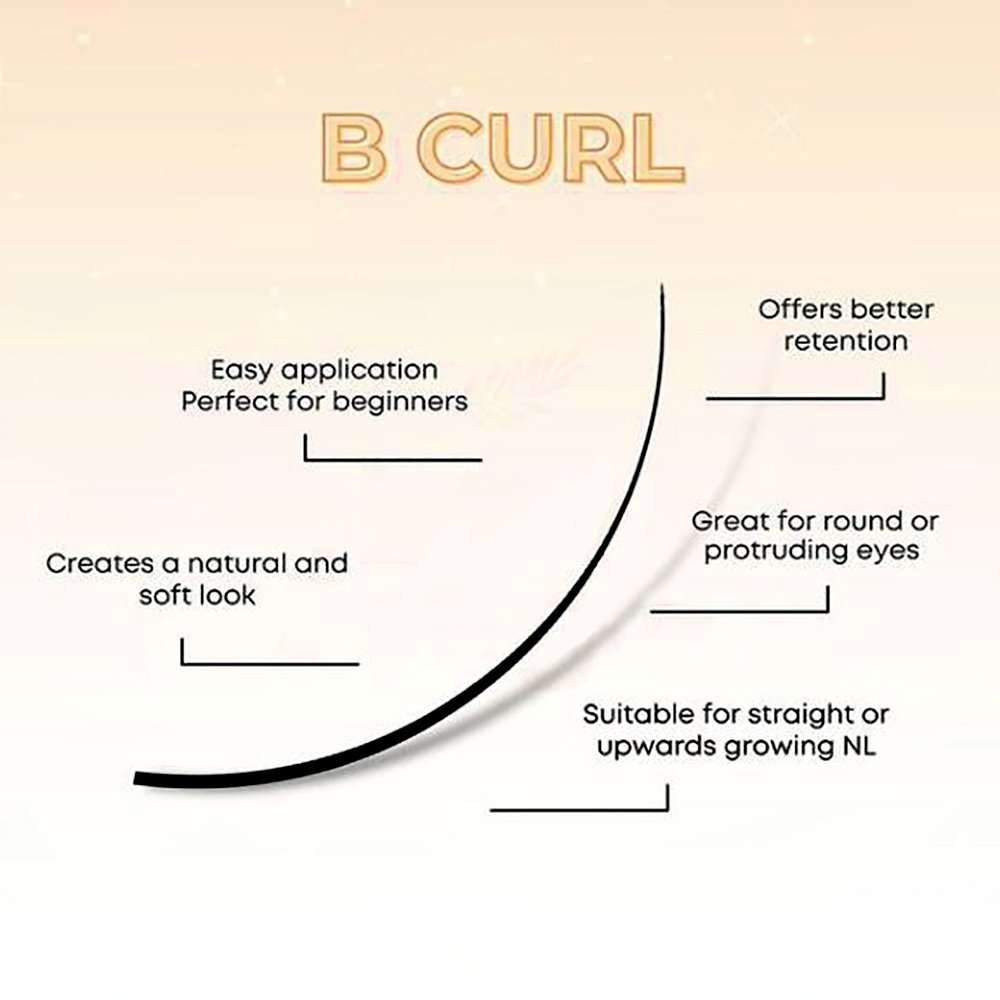
🤎C curls have a more noticeable curl, and they are perfect for clients who want a more open look without going too extreme. It’s one of the most popular curls worldwide and is great for clients that naturally have a slight downward curl or straight natural lash. It will create a lifted open eye that will work well with any lash styling and mapping.
C curl isn’t great for heavily downward-facing lashes as it could end up closing the eyes a little bit. It’s recommended to use D curl for this instance. C curl is best suited for downturned eyes, hooded eyes and upturned eyes.
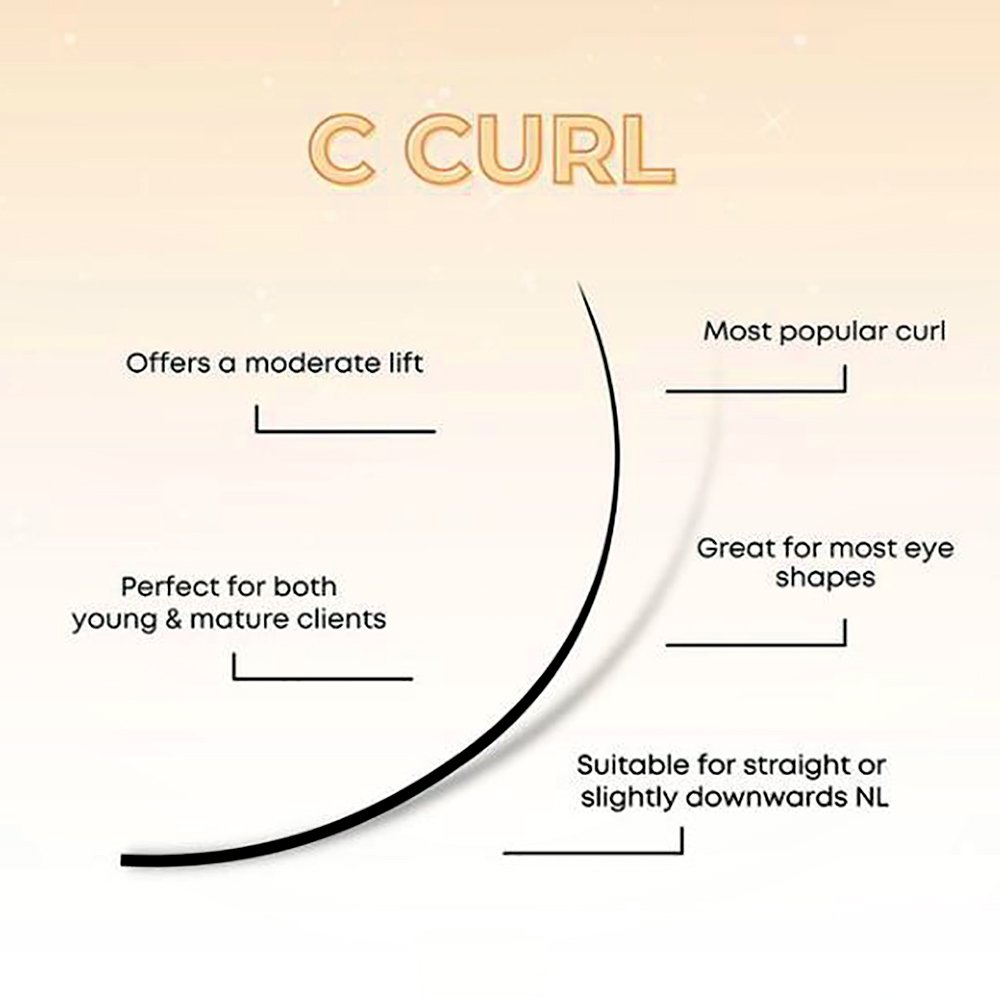
🤎D curls have the most dramatic curve and are ideal for clients who want a bold, voluminous look. As mentioned in the above section, D curl is better applied for clients who have naturally straight or downward-facing lashes, as it will assist in opening the eyes, creating a lifting and open-eyed look. This curl is best suited for almond eyes, hooded and monolid eyes.
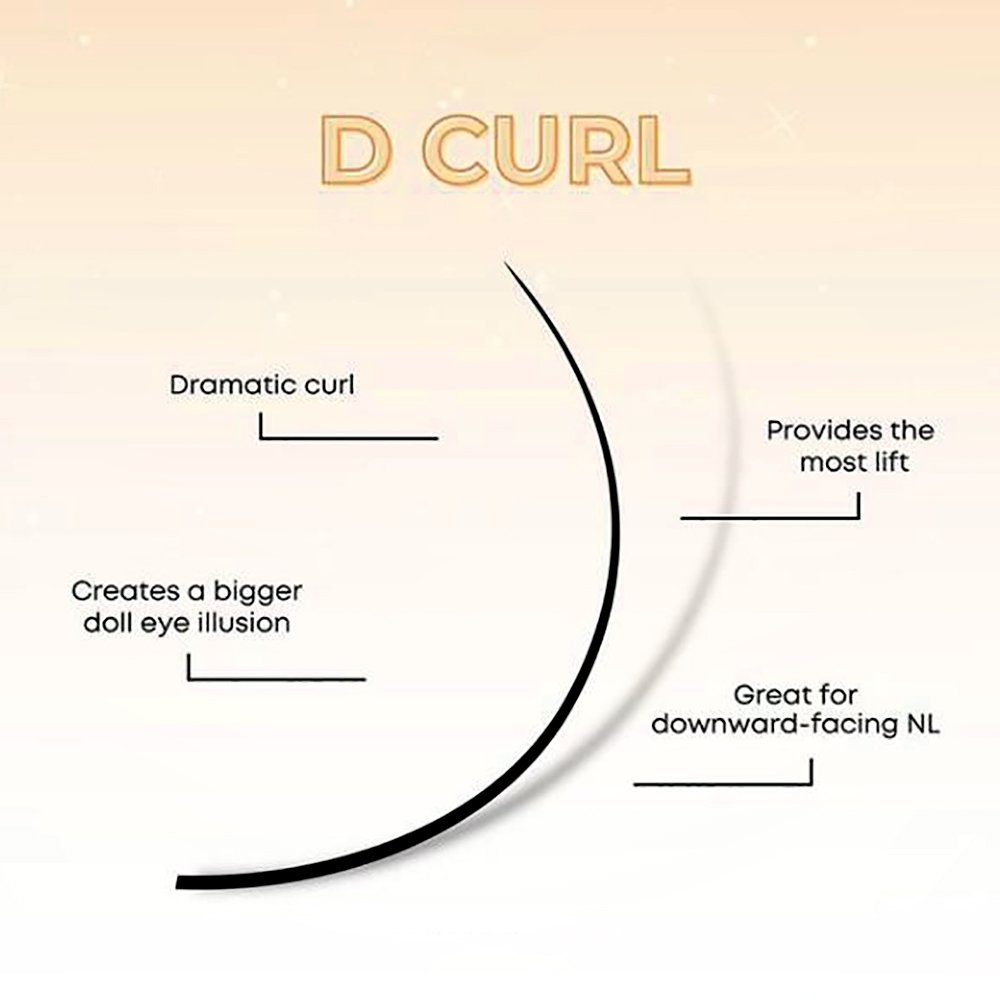
🤎L curls are named after the shape of the letter. The base of the lash is flat with a sharp curve making the tip point forward. It is great for clients with straight or down-facing lashes as it lifts the lashes and makes the eyes appear more open. This curl is great for Asian eyes and will help the appearance of an extreme cat-eye shape with a pronounced lift at the outer corner. It is best suited for almond and monolid eyes.
🤎M curls transition to a stronger curve pointing up towards the sky, it has a softer curve compared to L curl and a shorter flat base. This curl is great for almost every client, but may be best suited for those clients with straight, downward-facing lashes for an extreme cat-eye look. It is best suited for almond and monolid eyes.
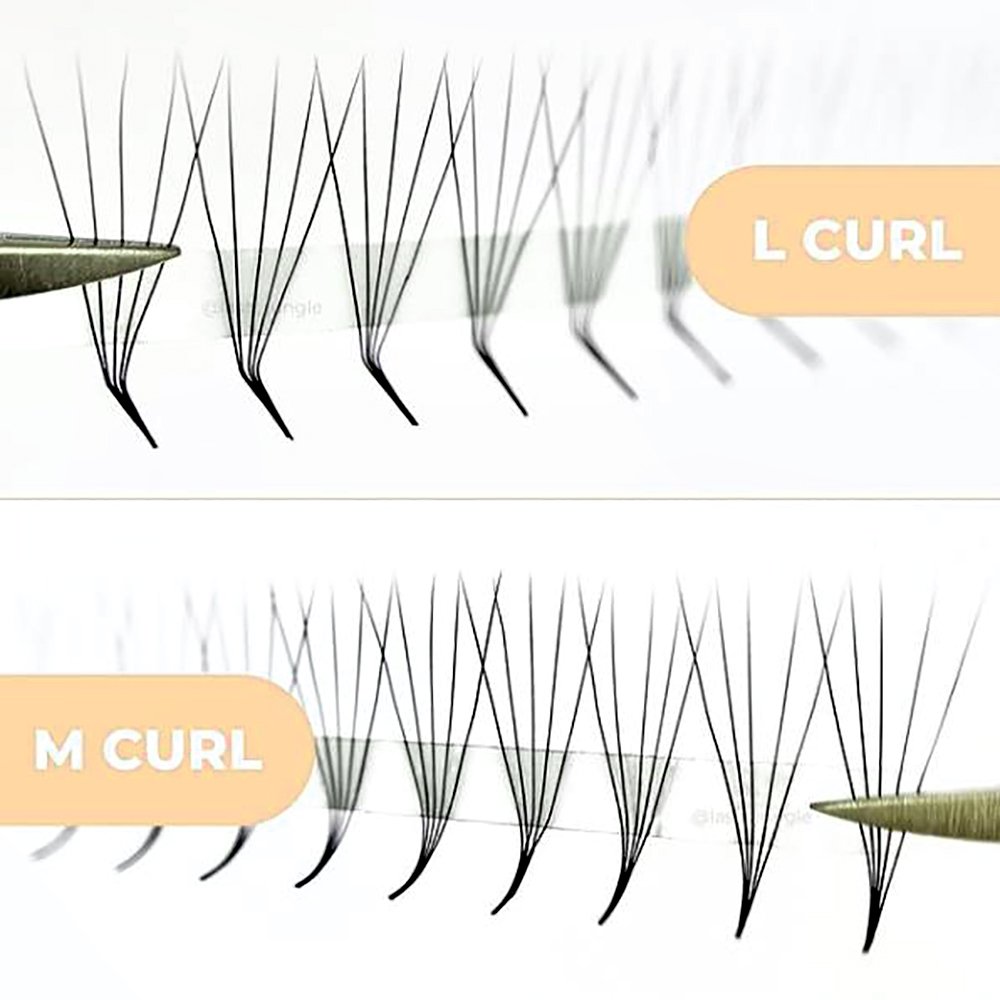
It’s essential to consult with your client to determine their preferred style and length. By assessing their natural lashes, and consulting about their everyday life, you can suggest the best curl that is suited to them. The chosen curl and style should complement their eyes and enhance their natural beauty. Don’t forget! The natural growth angle of the natural lash will also determine the look of the chosen curl.
What lash curl should I be using?
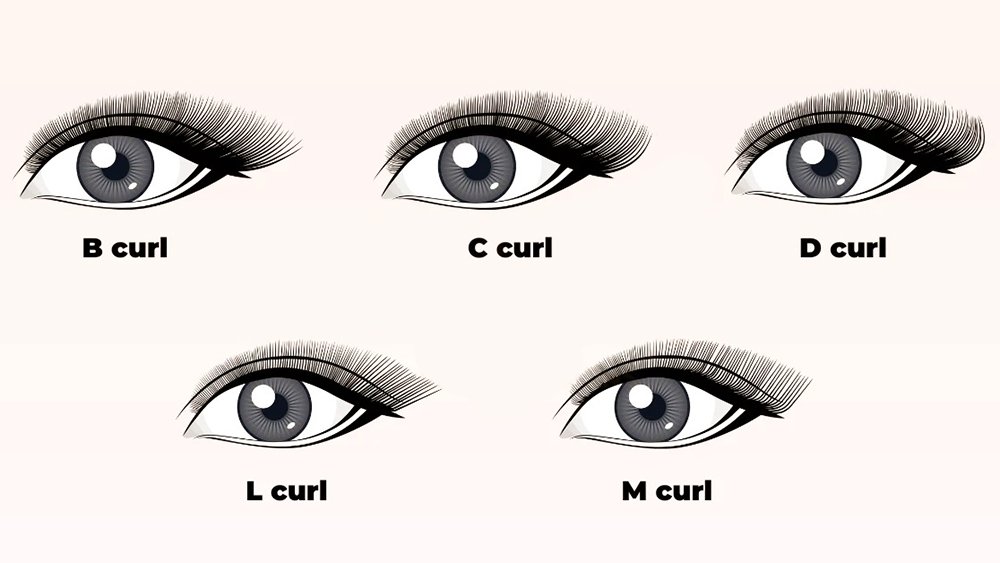
Choosing the right curl for your client can sometimes be a bit challenging. It will depend on your current stage as a lash artist. Are you comfortable enough to mix curls for a more advanced technical look? Or are you just starting out, and unsure of what to provide for your clients? Sticking with C and D curls in the beginning will give you a good foundation before moving onto other curls.
Does your client wear glasses daily? That is something you’ll also have to consider when mapping and styling lash sets. If the lashes hit and scrape the lens every time they blink, it will get incredibly annoying for them, not to mention it’ll be uncomfortable and they’ll have to readjust throughout the day by brushing the lashes.
As a beginner lash artist:
- As a beginner lash artist, you’re usually given a student kit that will have the basic but essential tools and equipment to get you started. This will include C and D curls of varying dimensions and lengths to create a set. This is a great start and will definitely help as you advance your skills. C and D curls will look stunning on almost everyone that you lash. It will also depend on the client’s eye shape and the way that their natural lash direction grows.
As an advanced lash artist:
- After being in the lash game for some years, you’ll have gained knowledge, experiences and learnt things along the way. Or you have been inspired by other lash artists and seen that they mix different curls in their sets for more flow and texture. Sometimes you can add in B curls in the inner corner and transition the set to C curl, so that the inner corner doesn’t poke the client. This is a great way of personalising and customising a lash set for a client.
Just remember, what works on one client, may not work for another. Everybody’s eye shape and natural lash growth is different as well – monolid, hooded, round, almond, the list goes on! Choosing the right curl for the client needs to be taken into account. Now let’s see what you can create with all the different lash curls!
